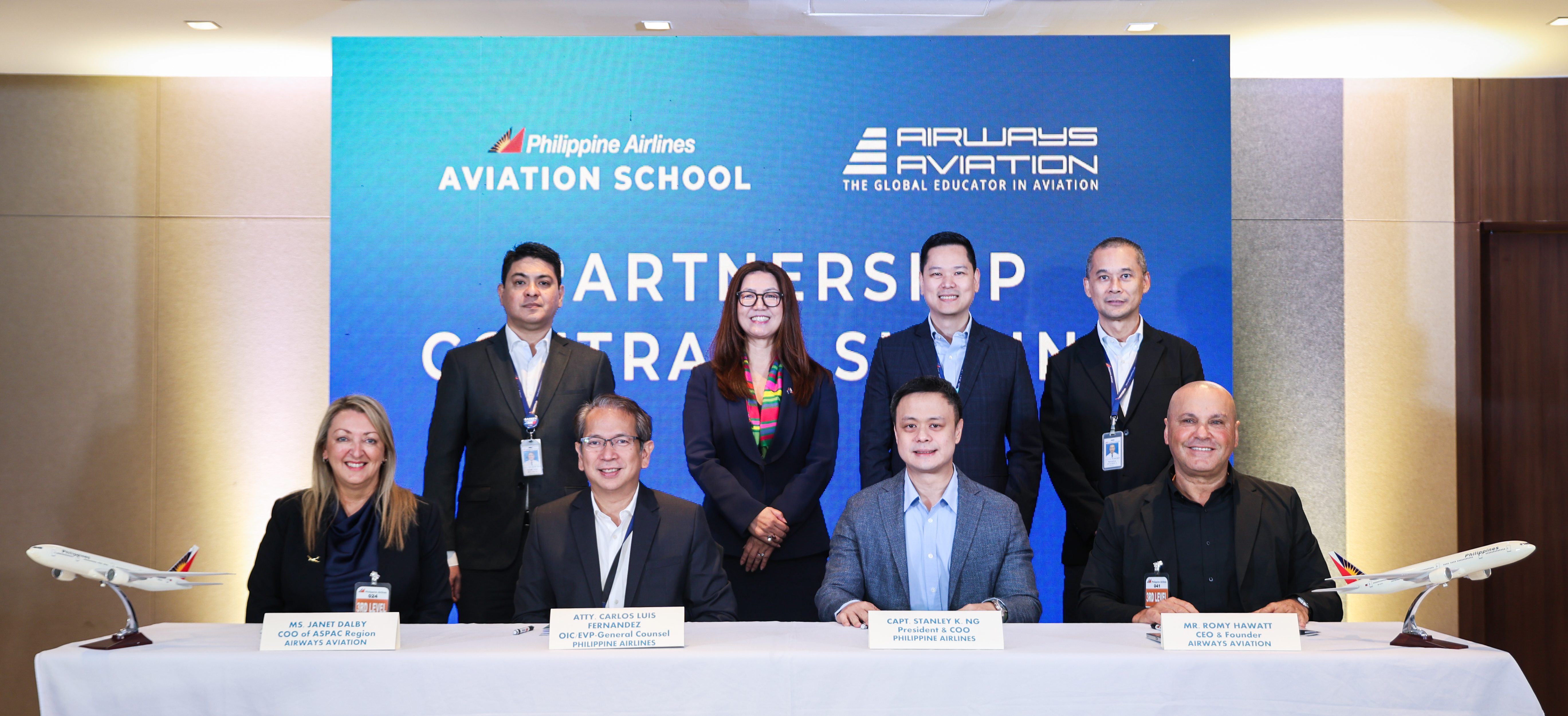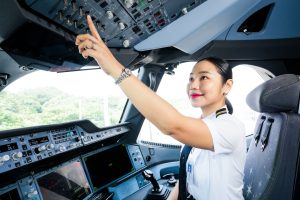PAL AVIATION SCHOOL REOPENS WITH AIRWAYS AVIATION
INKING THE FUTURE OF PAL FLIGHTS.
Senior executives of PAL and AAG headed by (seated from left) AAG CEO Australasia and Pacific Janet Dalby, PAL OIC EVP Atty. Carlos Luis Fernandez, PAL President and COO Capt. Stanley K. Ng, and AAG Founder and Chairman Romy Hawatt signed the partnership contract on April 10 in the presence of standing from left) PAL SVP for Operations Capt. Roland Narciso, Australian Ambassador HK Yu, PALex President Rabbi Vincent Ang and PAL AVP for PAL Aviation Training Center Capt. Ed Alfred Medina.
This year, Philippine Airlines charts a new course in its proud history with the reopening of the PAL Aviation School (PALAS). This transformative step reaffirms the airline’s commitment to developing talent from within and propelling the next era of aviation leadership. In partnership with the globally respected Airways Aviation Group (AAG), this milestone manifests a future-oriented investment in human capital. It develops the next generation of PAL pilots to world-class standards, with a spirit that is deeply Filipino.
This reopening is a reinvention. It unites PAL’s storied aviation legacy with the demands of a fast-changing world—one where sustainability, innovation, and global excellence define success. Here, we aim not just to produce pilots; we shape visionaries of the sky: disciplined, purposeful, and proudly PAL.
HONORING ITS ROOTS
First established in the early 1960s, the PAL Aviation School trained over a thousand pilots who helped shape Philippine Airlines into Asia’s first and most enduring airline. As PAL expanded its reach across the region and the world, the school laid the foundation for homegrown excellence in the skies. It later became one of the most sought-after aviation schools in Asia.
Cadets—most of whom were engineering graduates—underwent rigorous flight and ground instruction; it included simulator hours and actual DC-3 flight experience. Classes were selective, with trainees handpicked from hundreds of applicants and screened for academic strength, character, and technical aptitude. The goal back then was to instill professionalism and teamwork that define the PAL cockpit culture. That legacy endures—and is what the new Aviation School seeks to carry forward.
ALL EYES ON TAKEOFF.
With unified purpose and high anticipation, PAL, AAG, and partners launch a program to shape aviation’s future.
ANSWERING TODAY’S NEEDS
The school’s relaunch comes at a pivotal moment. The aviation industry has redefined itself post-pandemic, with evolving challenges in climate action and digital transformation. At the same time, PAL itself is undergoing an exciting transformation—strengthening its financial footing, expanding its reach, and modernizing its fleet to power the next century of flight.
Rebuilding in-house pilot training capabilities is essential to that transformation. The partnership with AAG ensures proper instruction under global best practices, starting with foundation courses in the Philippines and continuing at state-of-the-art campuses in Australia. This combination of local grounding and international exposure will allow PALAS to produce world-class flight professionals—pilots ready to meet tomorrow’s demands, not just today’s.
FLY WITH HER.
PAL and its Aviation School champion a future where more women take the flight deck.
INVESTING IN THE FUTURE
The PAL Aviation School stands as more than an institution—it is a launchpad for the future. Rooted in the airline’s enduring values of excellence, service, and resilience, the revitalized PALAS supports PAL’s mission to uplift lives, connect nations, and empower communities through flight.
This endeavor also strengthens the Philippines’ partnership with Australia, uniting two aviation cultures in a shared pursuit of innovation and educational excellence. It will nurture the next aviation pioneers.
As stewards of the national flag carrier, this is a moment to take pride in. It is a milestone that celebrates our heritage, answers the needs of today, and boldly envisions the skies of tomorrow.
When we say The Heart of the Filipino, it’s not just a tagline—it’s the standard we train for.
![]()




